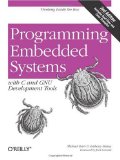I’m often asked what useful books software engineers should read when they start to work on embedded systems. So here’s a list of books I would recommend as starters. First, nowadays many embedded systems are written in C (although lower end systems using 8-bit MCU are still likely to be written in Assembler), so software engineers had better make themselves very familiar with C/C++ and GNU tools (gcc, libtool. automake…) with a focus on embedded systems (e.g. interrupts handling, real-time capabilities, volatile variables, processes and threads’ stack handling, , cross compilers…). Programming Embedded Systems: With C and GNU Development Tools, 2nd Edition is just the right book for that purpose. It deals with embedded Linux and eCos and provides useful examples. You may also read part of it online Once you start developing embedded systems you are likely to write device drivers at some points. Linux Device Drivers, 3rd Edition […]
Enabling swap in embedded systems
If your embedded system running Linux does not have enough memory, you can enable swap to get more memory. However if your platform does not have MMU (Memory Management Unit) as is the case for Sigma Designs EM8620 series, it won’t support swap, so forget it. If your platform does have MMU, as is the case for many newer platforms such as Sigma Designs SMP8630, SMP8640 and SMP8650 series, you can enable swap support. First you’ll have to make sure swap support is enabled in your kernel:
|
1 2 |
CONFIG_SWAP=y CONFIG_SWAP_PREFETCH=y |
and swapon/swapoff is enabled in busybox. So for example if you have an IDE harddisk with the second partition configured as swap. (Use fdisk to create a partition and mkswap /dev/hda2 to initialize the partition), you can enable the swap as follows:
|
1 |
swapon /dev/hda2 |
If you get out-of-memory killer kernel error, you can change the “swapiness” to avoid oom-killer to kick in.
|
1 |
echo 0 > /proc/sys/vm/mapped |
[…]



